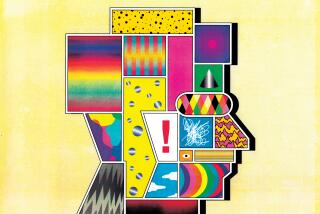Anxiety treatment: Medication, therapy or both can help
Karen Smuland has always been an anxious person. But after the Sept. 11, 2001, attacks on New York’s World Trade Center, she had her first panic attack and ended up in an emergency room, convinced that she was dying.
The 48-year-old architect from Bend, Ore., was quickly diagnosed with generalized anxiety disorder.
In the years since then, she has struggled to gain mastery over the condition through a mixture of therapy, medication and a lot of trial and error.
She tried several medications before settling on the anti-anxiety drug Effexor, the only one that didn’t give her troublesome side effects. She visited several counselors: One made her talk incessantly about her feelings — it made her feel worse — and another wanted her to deal with her vulnerabilities by facing them head on, which terrified her.
A third’s approach was somewhere in between, and it has helped her improve, she says.
Smuland’s experiences are par for the course. Treatment for anxiety typically includes medication, therapy or a combination. And because people vary a lot and the exact roots of anxiety are unknown, it’s hard to know what treatment plan will work until one experiments and finds out.
Experts have yet to pinpoint why anxiety occurs in some people and not others. “There are a lot of questions but not a lot of definitive answers,” says Dr. Brian Brennan, associate director for translational neuroscience at McLean Hospital in Belmont, Mass. People who undergo trauma or intense stress at an early age may be more prone. And there probably are a number of genes that contribute through their influence on levels of key brain chemicals, serotonin and norepinephrine, which are thought to be linked to depression and anxiety.
Though doctors are fuzzy on the precise cause, they know that an array of medications can help with the disorder.
Selective serotonin re-uptake inhibitors, which increase the amount of serotonin available to the brain, are one of the most commonly used classes of medications for anxiety. Initially used to treat depression, doctors noticed that anxiety in the treated patients also seemed to diminish.
Benzodiazepines such as Valium (diazepam) and Xanax (alprazolam) also are commonly used. They increase the activity of a neurotransmitter called gamma-aminobutyric acid, or GABA, inducing relaxation.
Brennan says these medications, particularly the popular SSRIs, are generally safe for most patients. Some, however, experience fairly common side effects, such as sexual dysfunction, weight gain, sedation and gastrointestinal issues.
“All of these things are going to be potential deal-breakers, especially if someone isn’t getting much benefit from the medications,” Brennan says. “And I wish I could say they are frequently helpful, but there is a fairly sizable population that gets partial or no benefit from them.”
Katie Linn, a 29-year-old who works at the National Alliance on Mental Illness of New York City as a youth and programs coordinator, takes Lexapro (escitalopram), one of the SSRIs, for her anxiety. She’d dealt with mild anxiety most of her life and had a full-fledged panic attack upon coming home from her first year of college. Her family assumed she was stressed, and Linn saysshe “suffered silently” for about six years before seeking treatment.
Though she was working at National Alliance on Mental Illness and was surrounded by supportive colleagues, she said she initially felt like a failure for taking medication. She at first had problems getting her dosage right but eventually figured out her baseline.
She also sought counseling. “What the medication did was level out my [emotional] roller coaster, but it didn’t solve any problems. And that is where therapy came in,” she says. “Recovery for me wouldn’t have been possible without both.”
Linn underwent cognitive behavioral therapy, the most common type of approach used for anxiety disorders. Usually short-term, lasting about 20 sessions, it teaches a person to identify a situation that might be causing problems, understand their thoughts about the situation, identify negative thinking patterns and challenge those thoughts. The goal of the therapy is to view problems clearly and respond to them more effectively.
“Therapy is really helping the patient to deal more appropriately with normal daily life stresses and not make them a big thing,” saysDr. Karl Rickels, professor of human behavior and reproduction at the University of Pennsylvania. “We teach them a molehill is only a molehill, and if we can do this, they will get better.”
Along with changing the way a person responds to situations, brain imaging studies show that there are physiological changes that occur in the brain when someone goes through cognitive behavioral therapy, says Dr. Rebecca Gladding, a psychiatrist at the UCLA Stewart and Lynda Resnick Neuropsychiatric Hospital and coauthor of the book “You Are Not Your Brain,” aimed at helping people retrain negative thinking patterns that can cause panic and anxiety.
She says the amygdala — involved in the so-called fight-or-flight response — starts to calm down. And the lateral prefrontal cortex, which helps with empathy and understanding, becomes more active.
“The good parts are lighting up and being more active, and others are quieting,” she says.
Though the best course of treatment for an anxiety disorder remains trial and error for now, doctors and patients aren’t entirely in the dark. Some predictors point to whether therapy, medication or both will likely work best for a patient.
As a general rule, the milder the anxiety is, the better patients tend to respond to psychotherapy.
People who are more insightful and committed tend to respond better to therapy, Brennan adds. They must be able to determine why they feel a certain way and to talk about it, and since treatment is very interactive and can be tedious, they have to be motivated to do the work.
Access, of course, is another factor in the probable treatment course: A lot of people see a primary care provider, get medication and never see a therapist. Medication is a lot cheaper than therapy, which is not always covered by insurance.
Still, most experts agree that while both types of treatment can be effective, a combination of the two is generally the best solution.
A 2000 article in the Journal of the American Medical Assn., for example, found in 321 adults that a combination of medication and therapy worked better than either individually. And a 2008 study in the New England Journal of Medicine looked at 488 children with anxiety disorder who received cognitive behavioral therapy, sertraline (Zoloft), a combination of the two or a placebo. After a three-month period, 80% of the children undergoing combination therapy had improved, compared with 60% in therapy, 55% taking medications alone and 23% on the placebo.
Some patients — Linn, for one — would prefer to quit taking medication eventually. She is hoping that therapy, breathing techniques and yoga will one day be enough to help control her anxiety and stress.
Others, including Smuland, are comfortable taking drugs for as long as they need to.
“I have had a lot of therapy, but the thing that works for me is medication,” she says. “I am very comfortable with it, and I have no guilt about taking it.”






